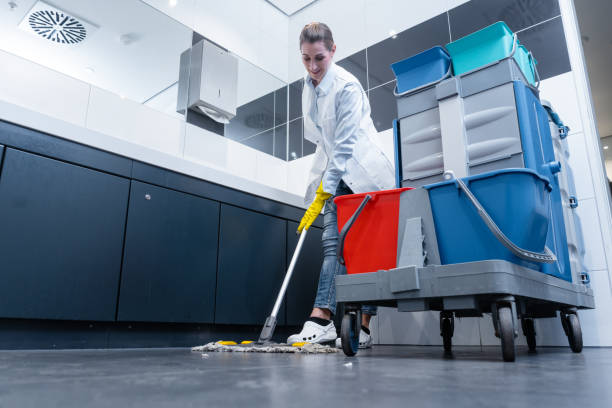The criteria on which customers base their perception of the quality of a restaurant are multiple: an atmosphere, a welcome, and of course, good food. However, the state of quality of a restaurant’s toilet cleaning remains an essential criterion for many consumers.
A majority of us even consider that clean toilets give confidence in the quality of the meals served. How to guarantee the hygiene of toilet in restaurants in compliance with the regulations? What cleaning and maintenance operations should be put in place in the sanitary facilities? What equipment and devices to use? Our article tells you everything.
- Catering: toilet cleaning and maintenance protocol
- Toilet cleaning: hygiene rules in catering
- Our selection of professional cleaning products for toilet bowls and urinals
- How to properly equip restaurant toilets?
- Our selection of equipment for sanitary hygiene in the workplace
Traffic strongly impacted the cleanliness of the toilets and the risk of infection is permanent. It is, therefore, necessary to regularly clean and disinfects restaurant sanitary facilities in order to maintain a healthy environment.
The hygiene rules to be applied must prevent the transmission of germs, in order to preserve the health of customers and the cleaner (and staff in the case of shared sanitary facilities).
Catering: toilet cleaning and maintenance protocol
It is imperative to develop, first of all, a protocol for the cleaning and maintenance of the premises for the use of the maintenance agents. This document :
- Lists the necessary equipment and maintenance products,
- Specifies the recommendations for use of the products (precautions for use, dosage, action, contact time, rinsing, drying, etc.)
- Explains the procedures,
- Provides information on maintenance frequencies,
- Lists the health and safety rules (Personal Protective Equipment required – PPE,
- Safety instructions to be observed, etc.,
- Allows cleaning operations to be planned and maintenance to be traced.
Toilet cleaning: hygiene rules in catering
Cleaning and maintenance operations should be carried out at least once a day (or several times a day if the surfaces are visually dirty), respecting the action time of the products.
- Clean high surfaces with a detergent-disinfectant to remove dirt and disinfect at the same time.
- Clean with the greatest attention to all surfaces in contact with the hands (door handles, push buttons, switches, grab bars, etc.).
- Clean wet surfaces with a detergent-descaler to remove dirt and scale (sink, taps, wall tiles, stainless steel surfaces, etc.).
- Brush the toilet bowl with a detergent-disinfectant using the toilet brush and clean all the toilet accessories (toilet seat and seat, toilet cistern, flush button, brush holder). Clean, and disinfect urinals with urinal tablets.
- Degrease the glass surfaces with a dry microfiber cloth or use a window cleaner and a window washer; wipe with a microfiber or window squeegee.
- Proceed with wet sweeping to dust the floors using a trapezoidal broom and pre-impregnated gauze.
- Wash the floor with a detergent disinfectant and a flat mop and mops. Deodorize the Space – Odor Destroying Air Freshener. Empty the trash.
- Replenish equipment (soap dispenser, hand towel, toilet paper, etc.).
Depending on the scaling:
- To remove scale from the toilet bowl, use a brush and leave it in the bowl for as long as the product is in contact – sanitary descaling gel adheres better to vertical surfaces and maximizes the contact time.
- Brush the faucet tips with white vinegar or a detergent disinfectant and a single-use hand brush.


